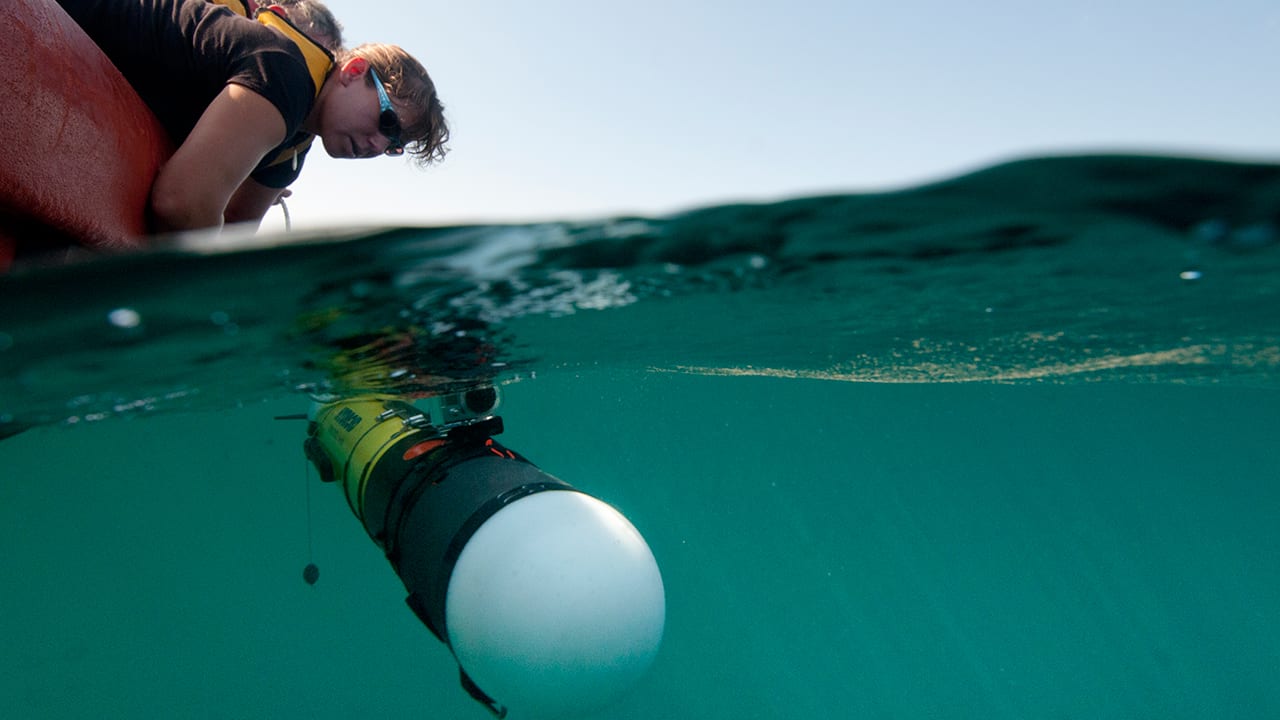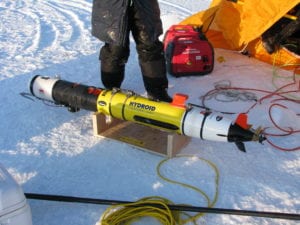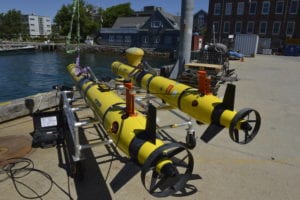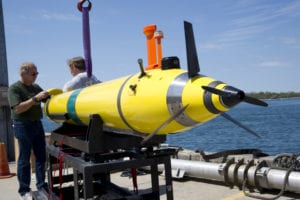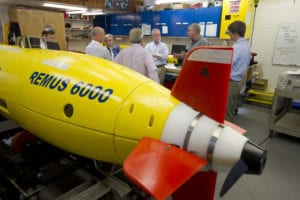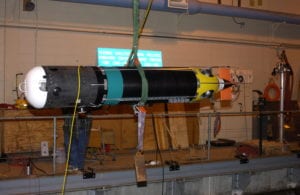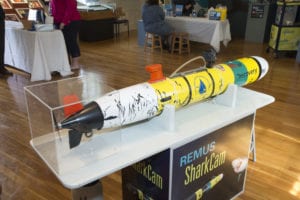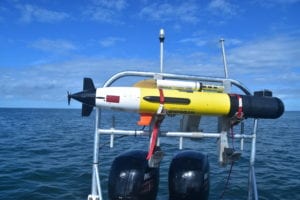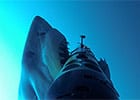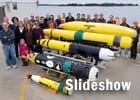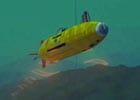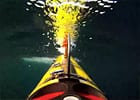REMUS
Remote Environmental Monitoring UnitS, or REMUS vehicles, are low-cost autonomous underwater vehicles (AUVs) designed by the Oceanographic Systems Lab to operate with a simple laptop computer.
Initially conceived for coastal monitoring, these torpedo-shaped vehicles are now used as platforms for a wide variety of instruments at a range of ocean depths. REMUS are particularly well suited for surveying and mapping, travelling methodically over an area like a lawnmower to sample key ocean characteristics.
REMUS vehicles use a propeller and fins for steering and diving. After entering the water, the AUVs use acoustic navigation to independently survey an area while sensors inside sample and record data. Inside each REMUS vehicle is a control computer that functions like a miniature laptop computer.
During Operation Iraqi Freedom in 2003, the U.S. Navy used REMUS vehicles to detect mines in the Persian Gulf harbor of Um Qasr. Navy officers said they preferred REMUS AUVs because each could do the work of 12 to 16 human divers, and they were “undeterred by cold temperatures, murky water, sharks, or hunger.”
Another REMUS, known as the Tunnel Inspection Vehicle, was specifically adapted to survey New York City’s Delaware River Aqueduct for leaks.
Vehicles
REMUS 100
REMUS 100 is a compact, light-weight, autonomous underwater vehicle designed for operation in coastal environments up to 100 meters in depth. The REMUS 100 can be configured to include a wide variety of standard and/or customer specified sensors and system options to meet your unique autonomous mission requirements.
REMUS 600
The most versatile member of the REMUS AUVs, the REMUS 600's modular design enables its sensors to be easily reconfigured for mission specifics. It has a mission endurance of nearly 70 hours with speeds up to 5 knots at depths up to 600 meters and with a range of 286 nautical miles
REMUS 3000
The REMUS 3000 is similar to the REMUS-600 in vehicle size, however this vehicle, constructed out of titanium, can swim to much deeper depths and it carries a more advanced sensor package for underwater mapping and imaging.
REMUS 6000
The REMUS 6000 is an innovative, versatile research tool designed to operate in depths ranging from 25 meters (82 feet) to 6,000 meters (19,685 feet or 3.73 miles), allowing for a wide range of autonomous operations.
REMUS Tunnel Inspection Vehicle
The WHOI Tunnel Inspection Vehicle (TIV) was built in 2004 to inspect a 45 mile section of the Delaware Aqueduct and to, ultimately, find its leaks.
REMUS SharkCam
SharkCam is a specially adapted REMUS 100 vehicle equipped with video cameras and navigational and scientific instrumentation that enable it to locate, track, and closely follow a tagged marine animal, such as a North Atlantic white shark (great white).
REMUS Turtlecam
Using technology similar to SharkCam, TurtleCam follows a turtle with a transponder attached, capturing its movements on video and measuring the salinity, temperature, depth, and current speed in the water around it.
Frequently Asked Questions
Images & Multimedia
REMUS Developers & Operators
WHOI Oceanographic Oceanographic Systems Laboratory (OSL)
The OSL is a team of engineers, technicians and staff that design and operate REMUS.
Hydroid LLC
Since 2001, several models of REMUS have been built by Hydroid in nearby Pocassett, Mass.

